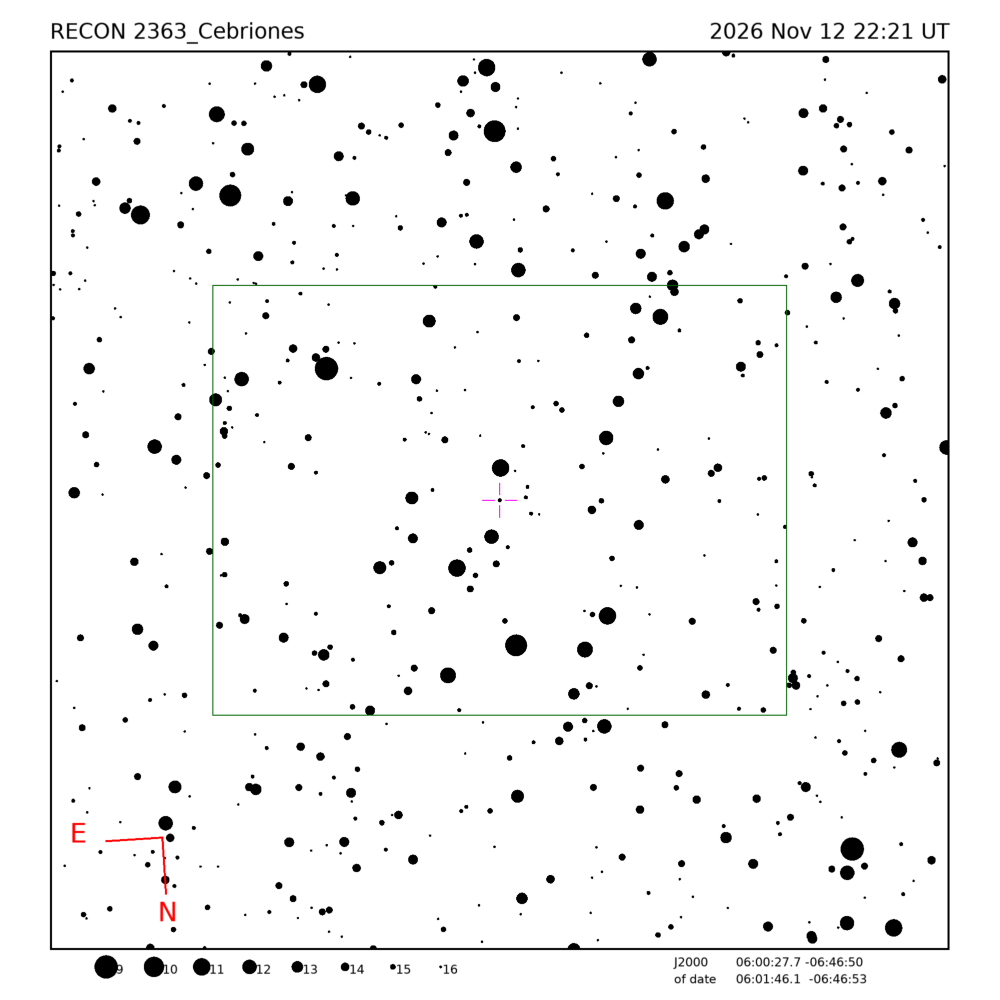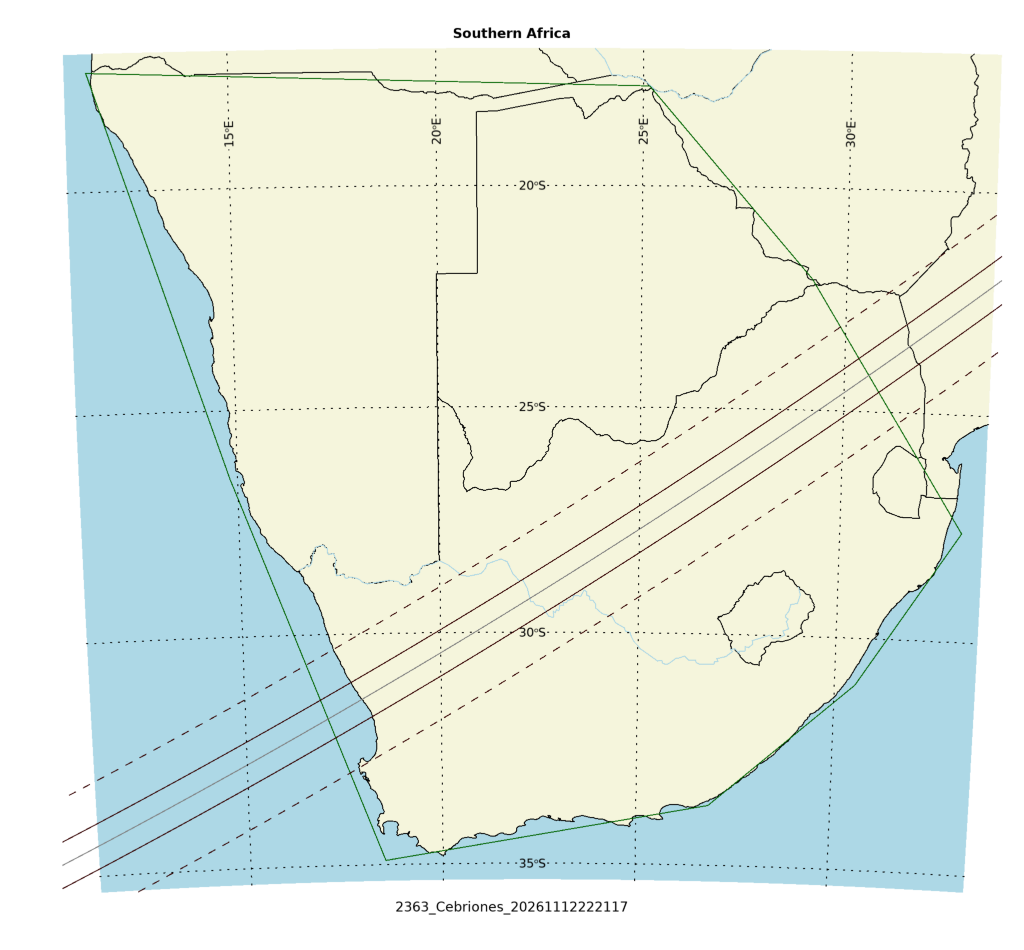
Occultation event with (2363) Cebriones, event index number 4656
Regions able to see the event: SAfrica
Geocentric closest approach at 2026/11/12 22:21:17 UTC
J2000 position of star is 06:00:27.7 -06:46:50
Equinox of date position of star is 06:01:46.1 -06:46:53
Star is 146 degrees from the moon. Moon is 12% illuminated.
Stellar brightness G=16.2, apparent brightess of occulting body is G=14.5
Use an exposure time of 1.35 seconds with the standard RECON-QHY system.
SNR of 4.1 per integration for unocculted signal
Expected flux drop is 17% with SNR of 0.7 for the occulted depth (per occulted point)
Apparent velocity is 17.2 km/sec on the sky relative to the star, or, 18.1 arcsec/hr.
Position angle of asteroid motion is 41.3 degrees
The recommended exposure time corresponds to 23.3 km per image.
The 1-sigma error in the time of the event is 1.1 seconds.
The 1-sigma cross-track error in the shadow position is 29.9 km.
The sky-plane scale is 3427.4 km/arcsec.
Diameter estimates:
93.8 km assuming a 5% albedo, maximum of 5.4 sec for a central chord
38.3 km assuming a 30% albedo, maximum of 2.2 sec for a central chord
Cross-track diameter of 96.0 km used for deployment plan.
Star training set for 2363_Cebriones, (2026/11/12 22:21UT) Object RA Dec mag sep mel Rigel 05:15:49.8 -08:10:21 0.1 11.47 142 Saiph 05:49:01.9 -09:39:44 2.1 4.27 143 55 Ori 05:52:39.9 -07:30:46 5.3 2.37 145 PPM 188670 06:01:06.9 -06:35:52 7.3 0.25 146 PPM 188690 06:02:05.7 -06:51:07 9.1 0.11 146 2363_Cebriones 06:01:46.1 -06:46:53 14.5 146 Positions are for equinox of date


Star training set for 2363_Cebriones, (2026/11/12 22:21UT) Object RA Dec mag sep mel Rigel 05:14:32.3 -08:12:06 0.1 11.47 142 Saiph 05:47:45.4 -09:40:11 2.1 4.27 143 55 Ori 05:51:22.0 -07:31:05 5.3 2.37 145 PPM 188670 05:59:48.4 -06:35:51 7.3 0.25 146 PPM 188690 06:00:47.4 -06:51:03 9.1 0.11 146 2363_Cebriones 06:00:27.7 -06:46:50 14.5 146 Positions are for J2000